
Everything You Need to Know About Grandmaster Recorders
Before you go to a restaurant, what do you want — or need — to know most? In our series, The Rundown, we’re sharing all the essentials about newly opened (as well as some of your favorite) restaurants.
The first time Grant Smillie walked into the boarded up, graffiti-covered former Grandmaster Recorders recording studio on Cahuenga Boulevard, he knew it had a lot more life in it. The studio had been closed for years, but during its heyday played host to music-industry royalty like Stevie Wonder, the Foo Fighters, and Kanye West.
Smillie feared that the building, like many others in the historic Hollywood district, would be torn down. So he decided to take the space over and transform it into a full-fledged entertainment complex, also dubbed Grandmaster Recorders, complete with a 150-seat restaurant, a bar called 71 Studio, and a rooftop lounge, all spinning in the heart of the newly dubbed Vinyl District.
Smillie and the Botanical Group, who also operate E.P. & L.P. in West Hollywood, along with culinary director Monty Koludrovic and pastry chef (and wife) Jaci Koludrovic, combine music, California-centric Italian food, and creative cocktails that nod to the building’s past while simultaneously looking ahead. There’s a lot to take in, so consider this your primer for what to know before you go.
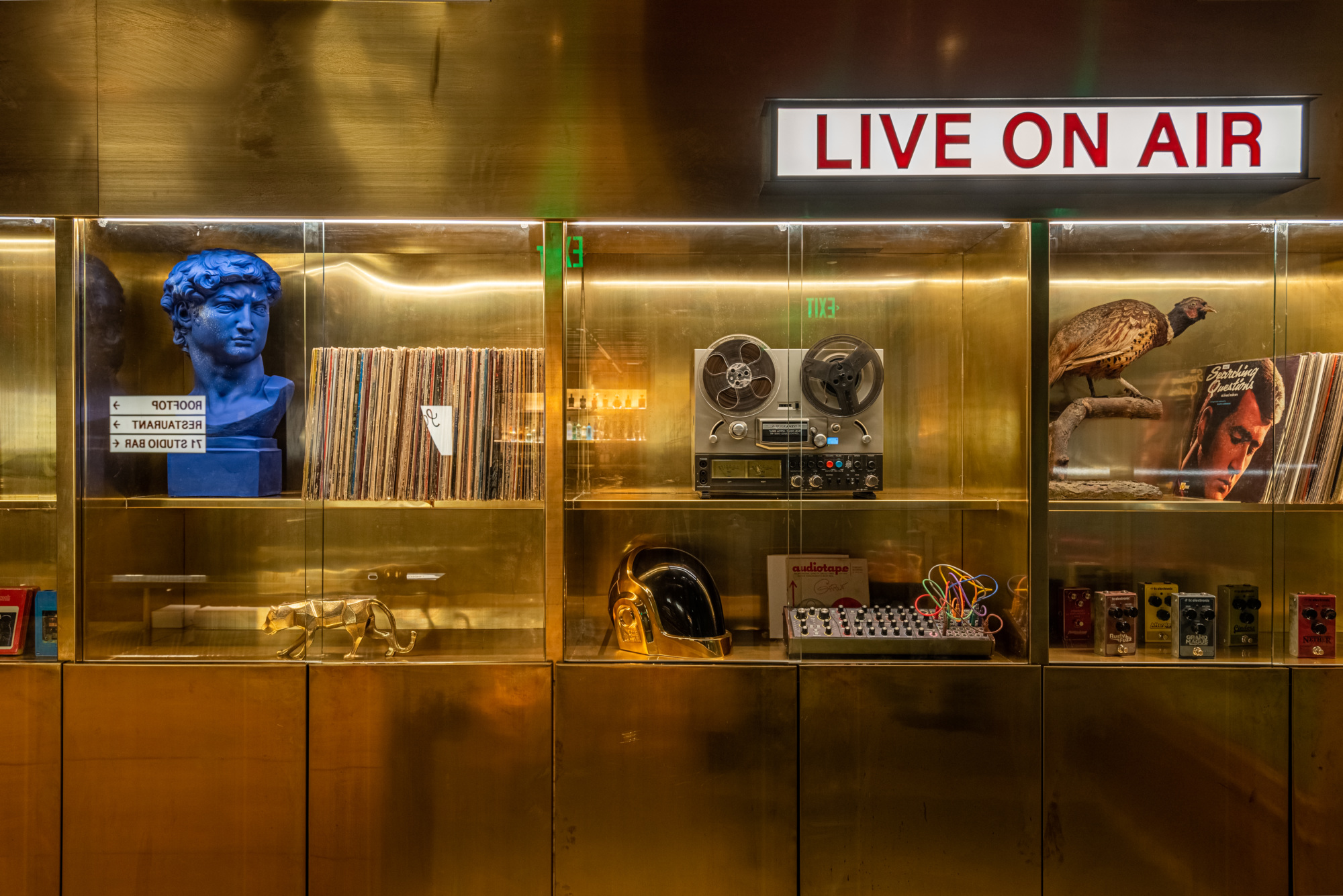
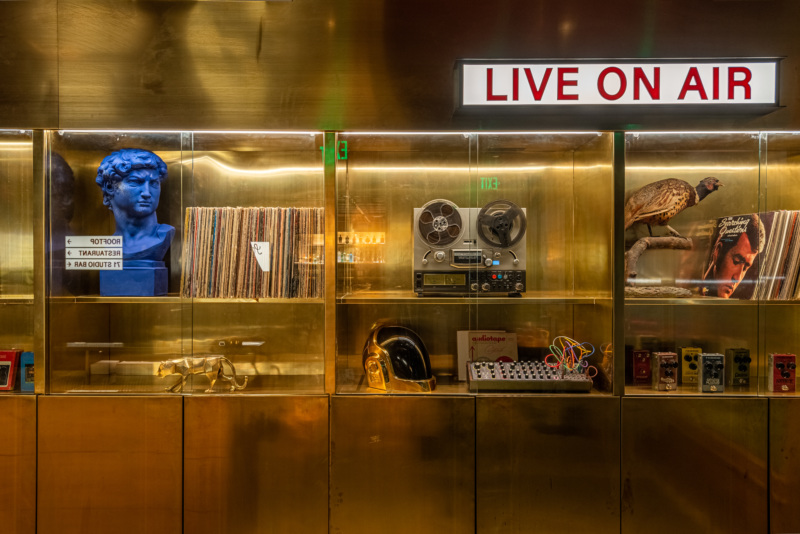
1. It’s all about the music.
The two-story brick structure was originally a silent-movie hall that opened in the 1920s. By the 1970s, it became the Hollywood Bijou Studio, where Stevie Wonder wrote and rehearsed his famous double album “Songs in the Key of Life.” That’s just the beginning of the studio’s storied history, Smillie says. Over the years, iconic musicians such as David Bowie, Blondie, and The Red Hot Chili Peppers would all record here, behind an unassuming facade.
Now, with its brightly lit marquee, the building is hard to miss. The lobby features a blend of past and present, with cabinets filled with vintage guitar pedals, records, eight-track tapes, and other studio gear. 71 Studio Bar sits to the left, in a room where a tremendous catalog of songs were once recorded. To the right is the restaurant, which was once an equipment warehouse (and where Mötley Crüe occasionally held free concerts). Playing everywhere in the background is a rock ‘n’ roll soundtrack that celebrates GMR’s 40-year history.
Subtle nods to the building’s musical past come into play in other ways, like coasters printed to look like mini records; a chocolate vinyl disc that tops orders of tiramisu; and cocktails named for bands and lyrics from the studio’s heyday. “We inherited a tremendous legacy,” Smillie says. “We hope to actually invite some of these artists back to collaborate in some way. Whether it’s a show or something with a culinary or drink perspective, so they can engage in the space in its new form.”
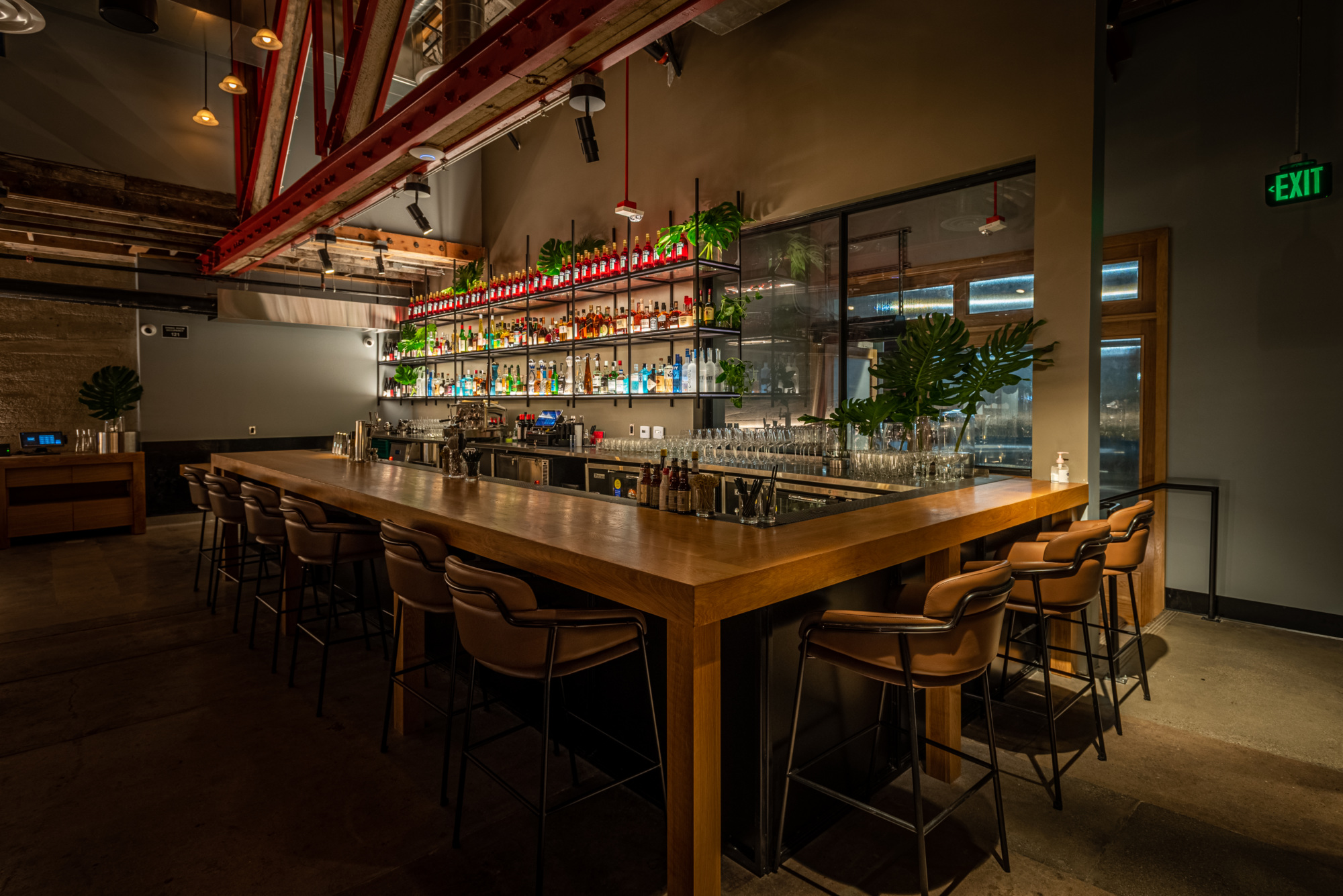
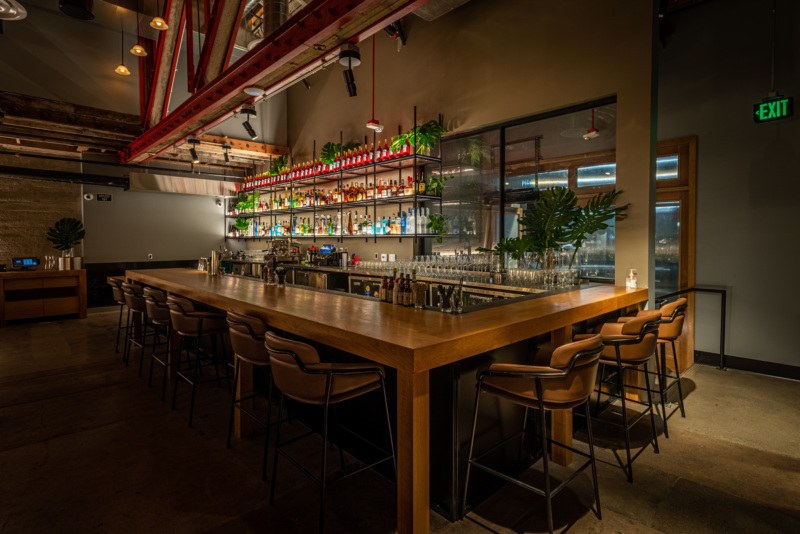
2. The bar hits all the right notes.
With velvet curtains, plush leather banquettes, and a disco ball, it’s hard to imagine that this was the place where Motörhead fired off a 12-gauge shotgun while recording their album “Bad Magic.” Or where, thanks to too much Tequila, the engineer forgot to hit “record” for a Guns ‘n Roses track. Don’t forget the time Kanye West laid down “Gold Digger” and Dave Grohl recorded “Everlong,” either.
These are just a few stories Smillie heard from former studio employees, and the spirit that now informs 71 Studio Bar. Named for the year the recording studio opened, the former control booth is now a bar aglow with golden-hued lights. There’s enough room for DJs and maybe even live music at some point. “The bar is where the mixing desk used to be. Now it’s a mixing desk of another sort,” says Smillie. “I think it’s important to stay true to the musicality that happened here, and keep that legacy intact.”
3. Drink like a rockstar — or at least a cocktail named for one.
Milosz Cieslak oversees the cocktail program for the entire complex. Each space has drinks exclusive to it, and some are universal from the ground floor to the rooftop. At 71 Studio Bar, expect sips like the Cheap Trick, made with vodka, simple syrup made with farmers market ingredients, clarified lemon, and Champagne, and Queens of the Old Fashioned, which has a touch of quince (Queens of the Stone Age also recorded here).
Fans of the original L.P. menu who remember one-of-a-kind standouts like boba cocktails or drinks served in oversized copper pineapples can (eventually) look forward to unique creations served in repurposed studio gear vessels. “One thing the pandemic allowed everyone was a bit more R&D time, so we could play with names and have a little fun,” Smillie says. He points to a simple gin and tonic, which features lavender-infused Hendrick’s gin with elderflower tonic, creating a cocktail with a rich violet hue. Devon D’Arcangelo, who worked with wine programs at Gramercy Tavern, Maude, and Bicyclette, oversees the 2,000-bottle-deep list for the restaurant and bars.


4. From guitar pedals to grilled scampi and Denver steaks.
A huge swath of the building was once a warehouse for manufacturing guitar pedals and other music-related fixtures, and now it’s an expansive dining room with industrial elements like fire engine-red beams, exposed brick and concrete, and a bowstring truss. It’s a rock ‘n’ roll setting for chef Monty Koludrovic, who, along with wife Jaci, moved to L.A. from Australia to work with the group on GMR.
The mostly Italian menu takes a few twists and turns through Sydney, Southeast Asia, and the Hollywood farmers market in dishes like caviar cannoli, seafood stew with lobster-knuckle grits, and bistecca Fiorentina grilled over orange wood. “We say it’s food that Nonna would recognize but never cook herself,” Koludrovic says. “I’m not bound by tradition, which allows [me] to explore what makes Italian food so special. And I think that rock ‘n, roll attitude is mirrored in cooking that’s culturally rich but doesn’t have to follow the rules.”
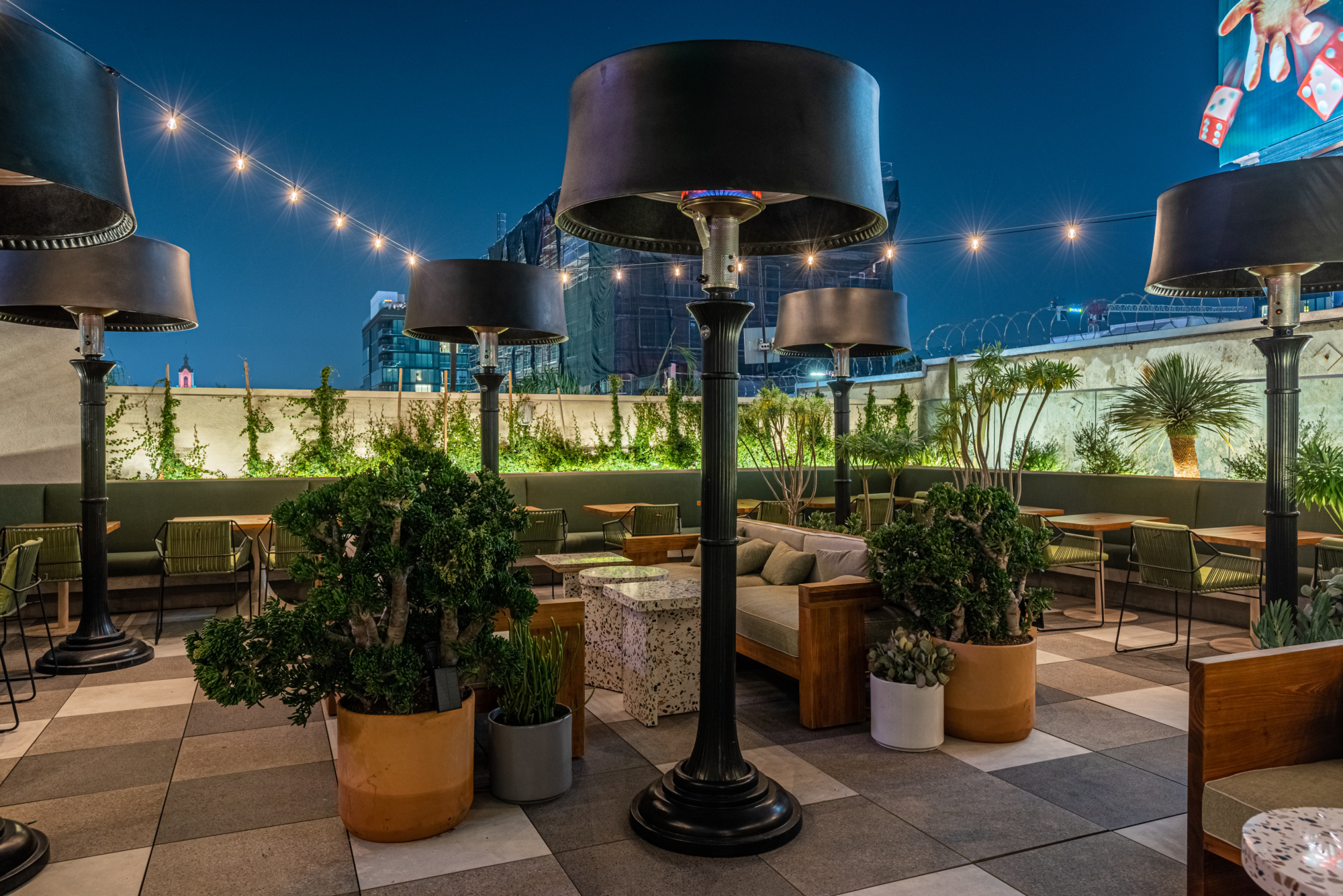

5. The rooftop lounge has the Hollywood Hills on display.
One thing this restaurant group knows how to do better than almost anyone is build a bar with a view. With the Hollywood sign and hills as a backdrop, the GMR roof is already a magnet for sunset cocktails and late nights under the glittering lights.
Even without the view, the outdoor space is transportive, thanks to a lush green-tiled bar, native plants, and abundance of terrazzo tile. While cocktails and spritzes are a focus, there is snacky food on offer, including a chicken Parm-inspired sandwich and mini mortadella paninis. The rooftop closes at 2 a.m.
The Vinyl District, bookended by the Capitol Records building on Vine Street and the former Amoeba Records home on Sunset Boulevard, is fast becoming a nightlife nook, with new hotel restaurants and bars within blocks of each other. Grandmaster Recorders is a welcome addition. “This place has great bones and a storied heritage,” Smillie says. “We’re now its custodians, and we hope to continue the conversation [about] its place today.”
Lesley Balla writes about restaurants, travel, wine, and more. You’ll find her work in publications including Los Angeles magazine, Angeleno, The Hollywood Reporter, and The Seattle Times. In a previous life she was the L.A. editor for Zagat and Eater. Follow her on Twitter and Instagram. Follow Resy, too.
















